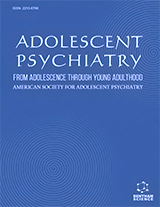Abstract
Aims: This study focused on describing profiles of children placed in out-of-home care.
Background: Research has shown that children placed in out-of-home care have numerous problems related to trauma associated with child maltreatment and behavioral health. However, they often do not receive adequate care. Prior research suggested that to improve outcomes for these children it is essential to address co-occurring problems and tailor services to their individual needs. This, however, can be a serious challenge to service providers due to the lack of information about behavioral health profiles and maltreatment histories as well as patterns of service use.
Objective: The aim of this study was to identify subgroups of children with similar mental health profiles and examine service use patterns amongst these groups.
Methods: Latent class analysis (LCA) was used to describe the profile of children with similar behavioral health characteristics and service patterns.
Results: Two distinct groups were identified: Children with Multiple Needs and Children in Families with Complex Needs. Children with Multiple Needs had a much higher rate of mental health diagnoses, caregiver loss, a higher number of emergency room visits for behavioral health reasons, and spending substantially more days in inpatient psychiatric care. Children in Families with Complex Needs had a much higher probability of experiencing neglect, having parents with substance abuse problems, and having a history of domestic violence.
Conclusion: These findings suggest that Children with Multiple Needs represent the most vulnerable population and specific strategies should be developed to address co-occurring needs of these children by utilizing community-based services and the least restrictive settings. Implications of the findings are discussed.
Keywords: Child maltreatment, out-of-home care, child welfare, mental health disorders, behavioral health, latent class analysis.
Graphical Abstract












